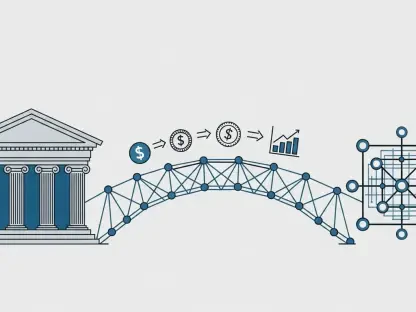The ongoing legal battle involving Ripple Labs and the U.S. Securities and Exchange Commission (SEC) concerning the classification of XRP, Ripple’s native cryptocurrency, as a security has been a prominent issue for nearly five years. Within the crypto community, this case has sparked considerable debate, holding significant implications for the future regulation of digital currencies. As the deadline for filing status reports, set for August 15, approaches, expectations regarding the potential resolution have intensified. One notable prediction by X user Mark Paul suggests a negotiated settlement could feature a $50 million penalty, eliminating further injunctions against Ripple. This proposal counters the SEC’s original demand, which initially called for a $125 million penalty, though later revised to align with recent recommendations.
Ongoing Legal Dynamics and Forecasts
Settlement Predictions and SEC Adjustments
Public interest in the Ripple vs. SEC case has been heightened by predictions pointing to a probable settlement. Mark Paul, a participant in these discussions, estimates a 70-90% likelihood of reaching a settlement, forecasting a $50 million penalty without subsequent restrictions on Ripple. This estimation represents a significant shift when juxtaposed against the initial penalty sought by the SEC. The Commission’s willingness to propose a lesser penalty reflects strategic adjustments amid ongoing negotiations and regulatory considerations, aiming to expedite the resolution process. On the other hand, Ripple has consistently challenged the SEC’s demands, opposing both the magnitude of the proposed penalty and the injunctions restricting XRP sales to U.S. institutional investors. This contrasting approach by Ripple underlines its resolve to minimize regulatory impacts, asserting its stance within the cryptocurrency industry.
Dissenting Legal Opinions and Judicial Stance
Conversely, industry voices, including former SEC attorney Marc Fagel, express skepticism regarding the likelihood of a reduced penalty and relaxed injunctions. Fagel’s opinion is grounded in existing judicial decisions that appear resistant to significant penalty reductions or the removal of restrictions. He highlights the enduring status of the court’s rulings, which continue to favor maintaining the $125 million penalty alongside the current injunction. These legal interpretations fuel continuing discussions and introduce additional layers of complexity, shaping perspectives on the potential outcomes of ongoing deliberations. This perspective emphasizes the intricate balance between negotiating settlements and adhering to judicial guidelines, with prior rulings exerting considerable influence on future developments.
Legal Complexities and Broader Implications
Procedural Intricacies and Indicative Rulings
Amid the broader litigation landscape, legal analyst Bill Morgan introduces another dimension by positing that the lawsuit may persist until an indicative ruling is achieved. He argues that such a ruling would pave the way for a motion for remand, compelling Judge Torres to approve an agreement reached between the involved parties. However, the recent decision by Judge Torres to reject the motion for an indicative ruling complicates these predictions. The rejection effectively prolongs settlement negotiations, demanding that involved parties chart a more protracted course toward a potential resolution. This procedural development underlines the nuanced and multifaceted nature of legal proceedings, showcasing the delicate interplay between strategic maneuvering and procedural requirements.
Regulatory Ramifications and Industry Outlook
This high-profile legal case offers insights into the evolving landscape of cryptocurrency regulation. It illustrates the challenges faced by regulatory bodies in adapting to rapid technological advancements within the financial sector. The outcome of the Ripple vs. SEC case could significantly impact policy-making dynamics, influencing how digital assets are classified and managed. It simultaneously highlights the tensions between fostering innovation and enforcing necessary regulatory frameworks dedicated to investor protection and market stability. Stakeholders from diverse sectors are keenly monitoring developments, anticipating rulings that may establish important precedents for future regulatory approaches. As the legal processes unfold, clear and informed analyses remain indispensable, given the volatile nature of both the cryptocurrency market and regulatory frameworks.
Broader Implications and Forward-Looking Insights
The legal proceedings between Ripple Labs and the SEC serve as a microcosm of the broader industry challenges associated with the intersection of innovative technology and existing regulatory structures. Through this lens, the case underscores the importance of navigating the complex balance between innovation and regulatory oversight, a balance crucial for sustainable growth within the technology sector. Executives, regulators, and investors must remain vigilant as they navigate these intricate dynamics, with the outcome potentially influencing the broader trajectory of digital finance. Moving forward, ongoing dialogue and collaboration will be essential in shaping a regulatory framework that both fosters innovation and protects market interests. This scenario calls for a committed engagement from all parties involved to develop adaptive strategies that address the evolving landscape’s demands.









